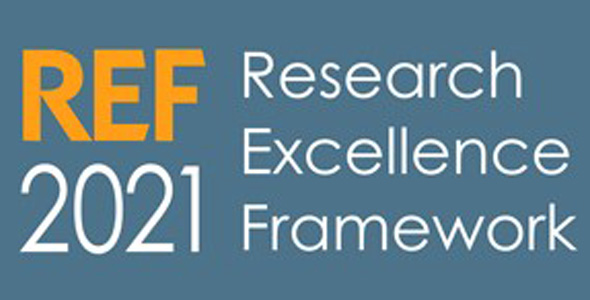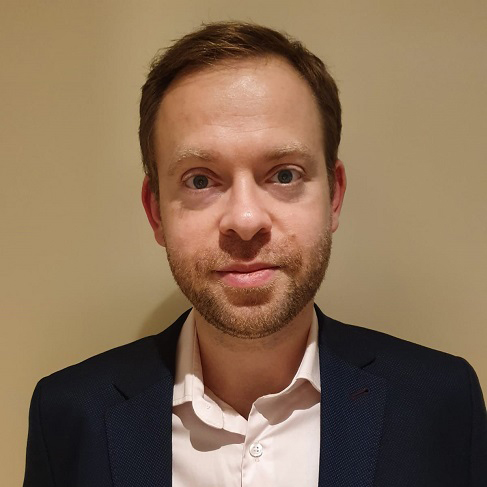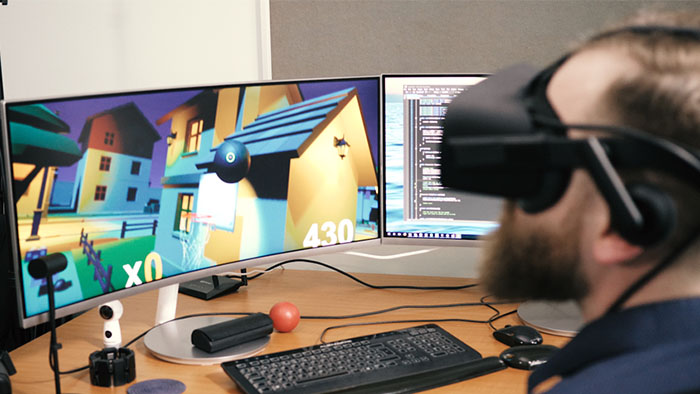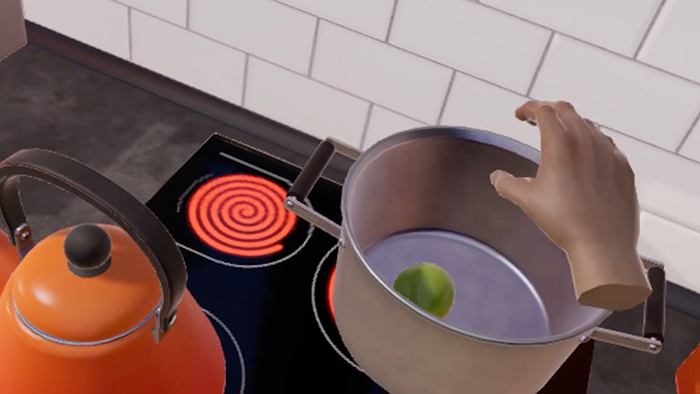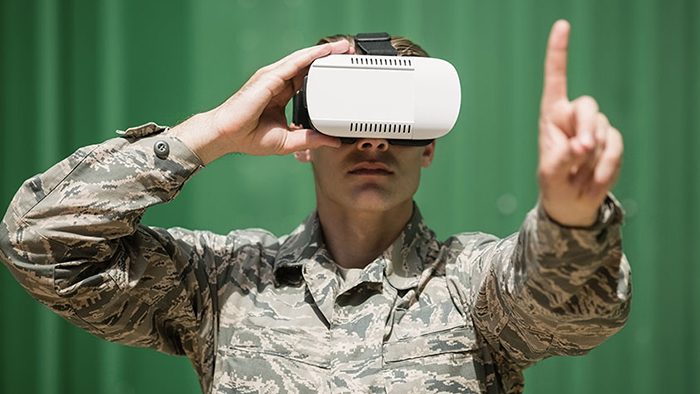Reducing pain for burns survivors
Burns injuries can cause intense and prolonged pain, which is often worse while dressings are being changed to prevent infection and aid healing. This painful procedure can also lead to severe anxiety and distress for patients, both in the run up to and throughout their treatment.
Working with burns survivors at Sheffield Teaching Hospital, we explored how VR can reduce pain and anxiety during treatment.
Through clinical trials, we found active VR scenarios that required patients to engage in their virtual surroundings were highly effective in helping patients cope with pain.
One participant said: ‘It took my mind off the pain and made me concentrate on VR, this is a good fall-back. I would like to always have this even if I had to pay for it’.
The immersive nature of VR does more than just distract patients — it captures the mind’s attention and helps to block pain signals from reaching the brain. This reduces pain perception as patients become absorbed in an alternative, more engaging world.
The benefits of using VR to treat burns patients are huge. While patients experience less pain, discomfort and anxiety, medical practitioners are able to spend more time changing dressings and removing surgical staples, all of which helps to speed up the healing process.
Supporting upper limb rehabilitation
For certain hand and arm injuries, particularly fractures, muscles and joints can go unused and become weakened. In some cases, physiotherapy is required to help limbs recover.
However, it can be difficult to motivate children to stick to these vital exercises.
Working with physiotherapists and play specialists at Sheffield Children's NHS Foundation Trust, we created Luna's Light, a VR archery and climbing game, that encourages children to complete their rehabilitation exercises in a fun and engaging way.
It’s designed to help children regain their mobility by carrying out movements such as reaching behind their back to grab arrows or stretching upwards to climb a castle wall.
Through game-play, children are encouraged to actively engage in their physio sessions and no longer see their appointments as a medical procedure or chore.
One patient said ‘I was doing something I enjoy. It was much easier to do, I didn’t notice any pain’. Their family member commented: ‘She didn’t look as though she was in pain at all. She looked as though she could’ve done a lot more than she realises is possible.’
The exercises are designed by a therapist, and the user can obtain in-game rewards to progress to the next level when they perform the exercises correctly.
The system is also a vital tool for physiotherapists to monitor how patients cope with certain exercises and track the progress they make — helping to motivate and aid recovery.
In 2023, Luna’s Light won Best Health Game at the 2023 Games for Change awards. The system is also being used at Sheffield Children's Hospital and Stanford University Children's Hospital, with plans to have this available for widespread adoption in the NHS and internationally.
Supporting lower limb rehabilitation
Following the success of upper limb rehabilitation, we have further collaborated with Sheffield Children’s Hospital to provide rehabilitation for children after lower limb surgery.
Alongside physiotherapists, we developed bespoke VR play scenarios for in-patients in the immediate post-surgery period to encourage them to perform the required physiotherapy exercises.
Engaging in these scenarios helped distract patients from the pain and assist with weight-bearing, which is essential for healing and recovery.
Patient anxiety was assessed before and after each session with patients reporting significantly lower levels of anxiety at their second appointment. Pain levels were also reported to be considerably lower at the second session.
One patient said ‘It made it more accessible and a lot easier. Because it’s when I was trying to walk with it, I was like on my tiptoes. But when I was doing it with VR, I could put my whole foot down and not be scared.’
We look forward to working with Sheffield Children’s Hospital to further develop this system and get it into the hands of patients.
Beyond entertainment
Our work has shown how VR can go beyond pure gaming and entertainment to transform quality of life for people facing serious health challenges.
From giving amputees their independence, to reducing pain for burn patients and helping children recover from injury, VR can transform people’s health, wellbeing and lifestyle.
We’re continuing to build on our work by developing new ways to treat people with different health problems and disabilities using VR. These include games to tackle dysphasia in stroke victims and help children with muscular dystrophy stay healthy for longer.
The opportunities to use VR in healthcare are endless. I’m proud to be part of an amazing team committed to using this technology to make a real difference to people’s lives.
